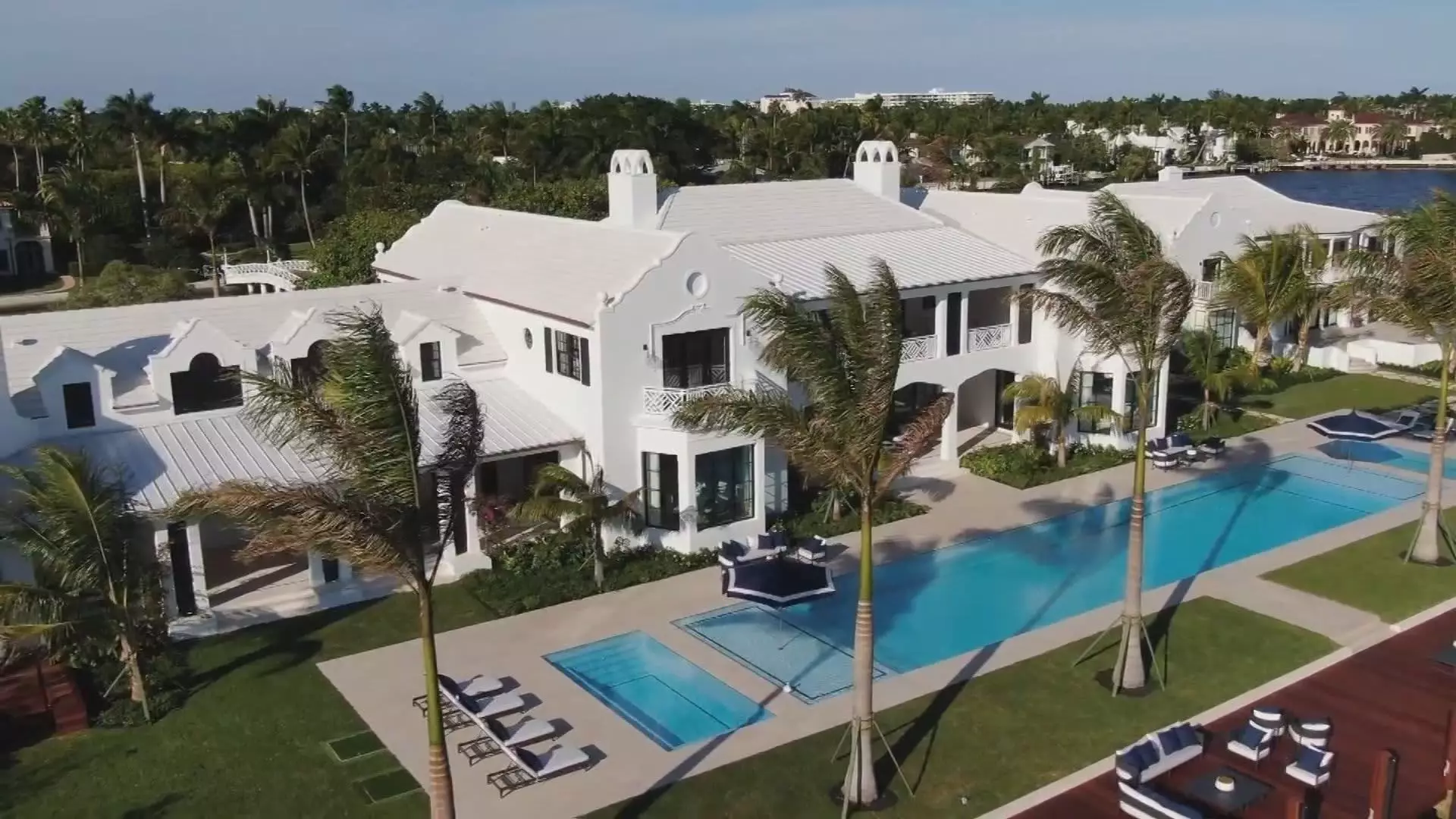In a time when the global economy faces uncertainties and fluctuations, certain segments of the real estate market display a remarkable resilience and growth characterized by ultra-luxury properties. This phenomenon is particularly evident in cities like New York, Miami, and Palm Beach, where the demand for high-end homes is on the rise despite broader market trends suggesting a slowdown. The contrast between these flourishing markets and the declining sales in more mature areas provides insight into the complexities of the luxury real estate landscape.
Recent statistics have shown an impressive surge in the sales of ultra-luxury homes, defined as properties valued at $10 million or more. Reports indicate that sales in Palm Beach skyrocketed by an astonishing 44% in the second quarter of the year, while Miami and New York followed closely behind with increases of 27% and 16%, respectively. Interestingly, New York emerged as the frontrunner in ultra-luxury sales, reporting 72 transactions, its highest figure in two years. Such figures are noteworthy and reveal a burgeoning appetite among the ultra-wealthy for top-tier properties.
On the contrary, cities like Los Angeles are experiencing a downward spiral, largely attributed to the implementation of a new “mansion tax.” This 5.5% levy on homes sold for over $10 million has had a chilling effect on the high-end market, contributing to a 29% decline in ultra-luxury transactions. These dynamics raise vital questions about the interplay of local tax policies and real estate trends, particularly how they can significantly impact buyer behavior in various regions.
The second quarter also witnessed some jaw-dropping sales, which underscore the allure of trophy properties among the ultra-wealthy. A pivotal transaction involved a private island in Palm Beach, which fetched $150 million—a record for the quarter—acquired by Australian investor Michael Dorrell. Additionally, an illustrious estate spanning 3.2 acres in Palm Beach sold for $148 million, while a penthouse in the Aman New York changed hands for $135 million. These high-profile sales not only reflect the upper echelons of wealth but also illustrate the ongoing trend of ultra-wealthy buyers competing for rare properties that confer status and prestige.
As certain markets flourish, others falter. Globally, the total sales of homes costing $10 million or more dipped by 4% to $8.5 billion. Notably, cities witnessing a decline included London, where fears regarding potential higher taxes have led to a staggering 47% reduction in sales. Conversely, Dubai continues to ascend in the ranks of ultra-luxury real estate, with sales reaching 85 transactions in the second quarter alone. The influx of affluent individuals relocating to Dubai, drawn by favorable tax regimes and an appealing lifestyle, signifies a remarkable transformation within the real estate landscape in this emirate.
Despite encountering headwinds in various markets, prospects for the ultra-luxury segment remain optimistic. According to experts, including Knight Frank’s global head of research, Liam Bailey, the ultra-wealthy are still willing to invest in rare and exclusive properties, a trend that has been fueled by considerable wealth creation in recent years. The interplay of declining interest rates could further catalyze sales, potentially leading to increased transaction volumes as we approach 2025.
Additionally, the allure of new and emerging luxury markets cannot be understated. Places like Palm Beach and Miami have experienced a transformation that offsets declines observed in more established markets. This shifting dynamic illustrates a reconfiguration of where ultra-luxury buyers are seeking investment and showcases the adaptability of wealth in navigating complex market landscapes.
The current state of the ultra-luxury real estate market is a complex tapestry of growth amidst decline. With certain cities thriving—thanks to unique attributes and investments—while others face pronounced challenges, it remains crucial for investors and analysts to stay attuned to these evolving trends. As the wealthy continue to seek out rare and desirable properties around the globe, understanding the multiple factors at play will be key in navigating the intricacies of this fascinating sector.

